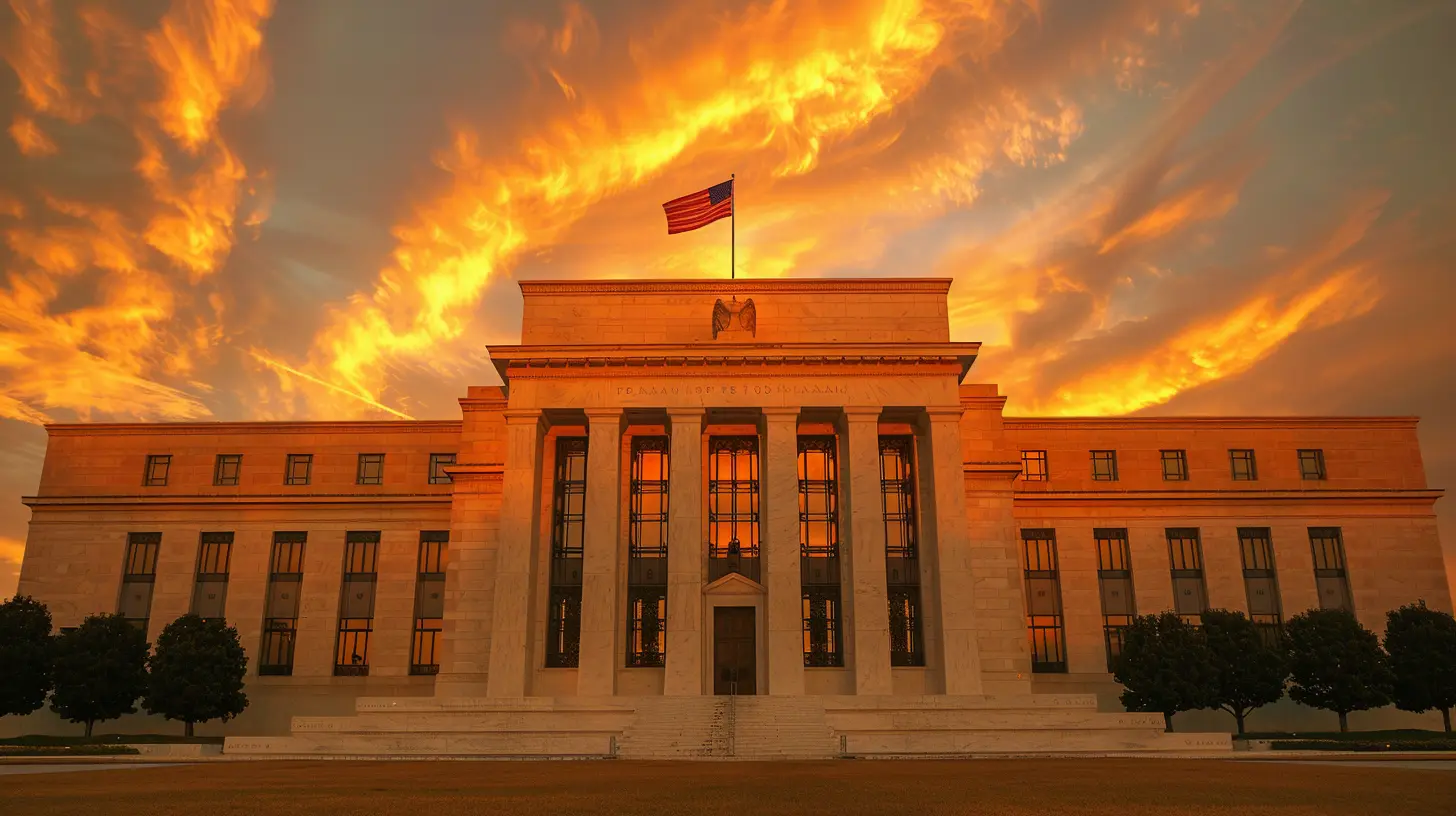Why Central Banks Monitor Wage Growth so Closely
29 May 2025
Central banks keep a sharp eye on several economic indicators, but one of the most scrutinized is wage growth. Why? Because it serves as a crucial measure of inflationary pressures, economic stability, and overall financial health. Wage growth can tell a lot about where an economy is heading, and ignoring it can lead to disastrous economic miscalculations.
But how exactly does wage growth impact economies? And why do central banks take it so seriously? Let’s dive deep into the mechanics behind wage growth and its profound influence on monetary policies.
What Is Wage Growth?
Wage growth refers to the increase in workers' salaries and wages over time. It's often measured as a percentage change year over year. When wages rise, people have more money to spend, which can boost consumption and economic activity.But here’s the catch: If wages rise too quickly, it can trigger inflation. If they rise too slowly or stagnate, it can indicate economic weakness. This fine balance is what central banks are trying to manage when they closely monitor wage growth.
Why Central Banks Care About Wage Growth
Central banks, like the Federal Reserve, the European Central Bank (ECB), and the Bank of England, constantly analyze wage growth as part of their broader economic assessments. Here’s why it matters so much.1. Wage Growth and Inflation: A Delicate Balancing Act
One of the biggest reasons central banks monitor wage growth is its direct relationship with inflation. Higher wages mean that people have more disposable income, which leads to increased spending. When demand for goods and services rises, businesses often raise prices.This cycle can fuel inflationary pressures—a situation where the general price level of goods and services increases. If inflation gets out of hand, the purchasing power of money declines, making it harder for consumers to afford essential goods. Central banks aim to keep inflation within a target range, typically around 2% in most developed economies.
On the flip side, stagnant wages can lead to weak consumer demand, slowing down economic growth. If wages fail to keep up with inflation, it reduces people’s real income, making living costs harder to manage.
2. Wage Growth as a Signal for Interest Rate Decisions
Interest rates are one of the most powerful tools central banks use to control inflation and economic growth. Wage growth plays a vital role in determining whether interest rates should rise, fall, or stay the same.- If wage growth is too high, central banks may raise interest rates to curb excessive inflation.
- If wage growth is sluggish, they may cut interest rates to stimulate economic activity by making borrowing cheaper.
Think of it like a thermostat—central banks adjust rates to maintain the right economic temperature, ensuring the economy doesn’t overheat or freeze.
3. The Phillips Curve: The Wage-Inflation Connection
Ever heard of the Phillips Curve? It suggests an inverse relationship between unemployment and wage inflation—as unemployment drops, wages tend to rise because there’s more competition for workers.While this theory isn’t foolproof (as seen in recent years), it still influences how central banks interpret wage growth data. If wages rise without a corresponding drop in unemployment, it could signal external factors at play, such as supply chain disruptions or labor shortages.
The Role of Wage Growth in Economic Stability
Economic stability relies heavily on the balance between wage growth, inflation, and productivity. Let’s break it down.1. Wage Growth and Consumer Spending
A healthy economy needs consumers to spend money. When wages rise, people can afford to buy more goods and services, driving business growth. This, in turn, boosts corporate profits, employment, and further economic expansion.However, unsustainable wage hikes can lead to businesses raising prices to cover increased labor costs. If businesses pass these costs onto consumers, it can fuel inflation, which central banks want to keep in check.
2. Wage Growth and Productivity
Here’s the deal: Wage growth is great, but only when it aligns with productivity growth. If wages rise faster than productivity (how much output each worker generates), businesses face higher labor costs without improved efficiency.This can lead to job cuts, outsourcing, or higher product prices, none of which are great for long-term economic stability. Central banks analyze whether wage growth is in sync with productivity to gauge its sustainability.
3. Wage Growth and Income Inequality
Central banks are also concerned about income inequality. When wage growth is concentrated in high-income jobs while lower-income workers see stagnant wages, it can lead to economic imbalances.Wealth gaps can weaken overall demand since lower-income households tend to spend a more significant portion of their paychecks. Central banks monitor wage distribution to ensure economic policies promote inclusive growth.
Factors That Influence Wage Growth
Several elements play a role in how quickly wages rise. Here are some of the most significant:1. Labor Market Tightness
When unemployment is low, companies compete for talent, pushing wages higher. Conversely, high unemployment can suppress wage growth as workers have fewer job options.2. Inflation Expectations
Workers and businesses often negotiate wages based on expected inflation. If inflation is projected to rise, employees demand higher wages to maintain purchasing power.3. Government Policies and Minimum Wages
Legislation, such as minimum wage laws, also impacts wage growth. Governments can intervene to ensure fair incomes, which indirectly influences monetary policies.4. Productivity Trends
As mentioned earlier, productivity trends determine whether businesses can afford to pay higher wages without raising prices. Higher productivity supports sustainable wage growth.5. Globalization and Outsourcing
With economies becoming more interconnected, outsourcing can limit domestic wage growth. If companies can find cheaper labor elsewhere, it can suppress local wage increases.Challenges Central Banks Face When Monitoring Wage Growth
1. Delayed Data and Lagging Effects
Wage growth data isn’t always immediate. Sometimes, by the time central banks react, inflationary pressures have already built up. Delayed responses can make it harder to fine-tune monetary policies.2. External Shocks and Market Speculation
Unexpected events, such as pandemics, geopolitical tensions, or energy crises, can influence wages and inflation unpredictably. Central banks must adapt quickly to such shocks.3. Structural Shifts in the Workforce
Changing work environments, such as the rise of gig economy jobs and automation, redefine traditional wage structures. Central banks must reassess old models to stay ahead.Final Thoughts
Wage growth isn’t just about workers earning more money—it’s a vital cog in the economic machine. Central banks monitor it like a hawk because it directly affects inflation, interest rates, and overall financial stability.If wage growth is too rapid, inflation can spiral out of control. If it's too slow, economic stagnation becomes a real threat. Striking the right balance is what central banks aim to achieve through their policies.
So, the next time you hear about wage growth in the news, know that it’s more than just a number—it’s a crucial signal shaping the financial world around you!
all images in this post were generated using AI tools
Category:
Economic IndicatorsAuthor:

Audrey Bellamy
Discussion
rate this article
3 comments
Phaedra Whitley
Central banks track wage growth to gauge inflationary pressures and adjust monetary policy accordingly.
June 4, 2025 at 2:52 AM

Audrey Bellamy
Absolutely, tracking wage growth helps central banks anticipate inflation trends and make informed monetary policy decisions to maintain economic stability.
Matilda Adkins
Because if wages grow too fast, central bankers might need to swap their calculators for a crystal ball! Who knew predicting the economy required a bit of psychic flair?
June 3, 2025 at 12:28 PM

Audrey Bellamy
Thanks for the playful take! Wage growth is indeed a key indicator that keeps central bankers on their toes as they navigate economic predictions and policy decisions.
Elin Meyers
Wage growth signals inflation trends and economic stability.
June 3, 2025 at 3:03 AM

Audrey Bellamy
Absolutely, wage growth is a key indicator for central banks, as it reflects consumer spending power and influences inflation trends, ultimately impacting economic stability.



